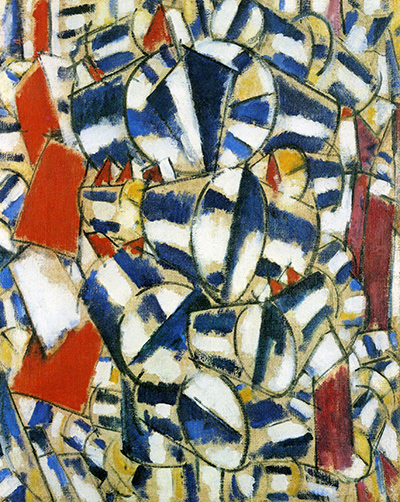Joseph Fernand Henri Léger was born on 4th February 1881, in Argentan, rural Normandy. He wasn't encouraged to take up art even though he possessed a talent, he was raised by his family to take a worthwhile and valuable trade, just like his father whose occupation was a cattle dealer.
Léger was sent to Caen to work alongside an architect where he trained as an apprentice from 1897 to 1899. He moved to Paris in 1900 where he worked as an architectural draftsman.
After military training in Versailles, Yvelines from 1902 to 1903), Léger enrolled and studied at Ecole des Arts Décoratifs and Académie Julian, where he spent three years studying with other pupils such as Gerome.
Léger's early art from this period showed an influence from Impressionism, though around 1907 the artist Paul Cézanne of the Salon d'Automne seemed to change the direction of how Léger painted from that point onward.
Training
Léger moved to Montparnasse in 1909 and began his reputation as a Cubist with work such as Le Compotier sur la Table. Though he had met and become acquainted with other fellow artists like Pablo Picasso, Henri Rousseau, and Georges Braque, some of his closest friendships were with writers Blaise Cendrars and Guilleume.
In 1911 the Salon des Indépendants exhibited Léger's early paintings that would lead to him being recognised as a Cubist artist, mostly his painting titled Nudes in the Forest. Léger carried on exhibiting his various paintings until in 1914 when he was called into military service.
Léger unfortunately, returned to France with a head injury which he suffered during an event in 1916 in which he was gassed in Verdun. The experience of war had a significant effect on Léger and made him even more determined in his artistic pursuits to show the human figure.
It was during his time in the military that he sketched pieces of artillery, aeroplanes and other soldiers in the trenches.
Contrasts of Forms
1913 was to be a banner year for Léger as this was the year in which he realised how to become his own, unique style of artist, rather than follow in the footsteps of Braque or Picasso.
During this time he worked on a series of large paintings entitled Contrasts of Forms. These paintings each examined the ways in which basic colours, primary and secondary, could be together intermingled with black and white to make the canvas like music. So it could be enjoyed as a certain scene without it being read.
Léger used mechanical shapes stacked vertically, almost like bodies.
Three Women (Le Grand Déjeuner)
One of Léger's most well-known paintings is the Three Women from 1921. In Three Women he has utilised the canvas with a collage type painting. It still feels very much like his style with its mechanical figures and primary colours.
The subject that Léger has used is perhaps the most well-known topic in the history of art, with the nude women. This was very typical in the 1920s as many artists used nude as an art form. Léger had not lost his interest in everyday people, but it is seen as a response to a much more culturally wider interest in past art forms.
Other Famous Paintings
Léger's most notable painting's from the 1920's and 1930's in which he incorporated a number of elements from everyday life such as representations of human figures and machinery that showed movement. These paintings during this period include "Adam and Eve", "Mona Lisa with Keys," and "The Mechanic," as well as many others.
Later Years
Léger married Jeanne-Augustine Lohy in 1920. During this time he met a gentleman Le Corbusier who shared the same interest in machinery and speed and motion. Léger and Le Corbusier remained close friends for the rest of their lives.
He temporarily relocated to New York City in the United States of America to escape the arrival of World War II in 1940. There he influenced many painters in the nearby New York School and Léger did a lecture series for the students at Yale University called "Color in Architecture."
During this period he produced a series of work named the "Divers," they were well-known for their unique overlapping outlines and portraying figures of swimmers that were diving off the docks in Marseille. Léger followed up these paintings with two further pieces that showed human figures moving "Acrobats" and "Cyclists."
During the late 1920's Léger branched out to other forms of creative expression. He worked in film producing his film in 1924 titled Ballet Mechanique, illustrated books, made sets and costumes for ballet performances and founded his free school for modern art with Amédée Ozenfant.
Léger's wife died in 1950, and in 1952 he re-married a lady called Nadia Khodossevitch. On 17th August 1955, Léger died in Gif-sur-Yvette, France.
Legacy
His uniquie take on Cubism that relied heavily on cylindrical forms made Léger one of the best-known abstract painters of his time. While he made use of primary and secondary colours in combination with his own unique idea that everyone can reflect and understand art. This belief of Léger's that art could systematically unify people may have led to community-based art forms and activism movements just like Fluxus. Léger was perhaps the first painter to take the imagery of machines, and make those objects of society the subjects in his paintings.




